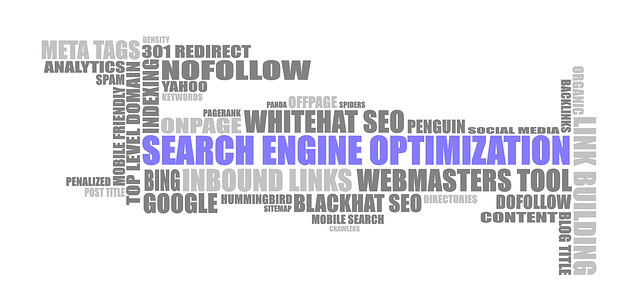Internal linking is a powerful SEO strategy that enhances website visibility by creating hyperlinks within a site, improving navigation for users and search engines. Strategic placement of internal links guides users to relevant content, boosts user experience, and distributes link equity. Key practices include keyword-rich anchor text, consistent navigation, and regular audits using tools like Google Analytics and Search Console. On-Page Optimization Training teaches advanced techniques like semantic clustering and effective linking structures for improved search engine rankings and enhanced user engagement.
Internal linking is a powerful technique that can significantly enhance your website’s On-Page Optimization (SEO) strategy. This article provides an in-depth guide to mastering internal linking techniques, offering valuable insights for digital marketing professionals and content creators. We’ll explore the fundamentals of on-page optimization, effective placement strategies, user-friendly navigation structures, keyword-rich anchor text practices, performance measurement, and advanced techniques to elevate your SEO game. Dive into this comprehensive training to unlock the full potential of your website’s internal links.
Understanding Internal Linking: The Foundation of On-Page Optimization

Internal linking, a cornerstone of SEO strategies, plays an indispensable role in enhancing a website’s visibility and user experience. It involves creating hyperlinks between pages within your own site, enabling users to navigate seamlessly while search engines crawl and index content efficiently. This technique is fundamental to on-page optimization training, as it helps establish a clear hierarchy and context for both visitors and search algorithms.
By strategically placing internal links, you guide users and search engine bots to relevant content, fostering a better understanding of your website’s structure. This not only improves the overall user experience but also allows you to distribute link equity across your pages. Effective on-page optimization includes mastering internal linking to ensure that each page contributes to the overall authority of your site, thereby boosting its rankings in search engine results.
Strategies for Effective Internal Link Placement

Internal linking is a powerful SEO strategy, and effective placement is key to its success. When implementing internal links, consider the user experience first and foremost. Links should enhance the natural flow of content, guiding readers seamlessly through related resources. For instance, if you’re discussing a specific topic within an article, naturally integrate links to other relevant articles on your site, offering additional insights or complementary information. This not only improves engagement but also helps search engines understand the context and relevance of your content.
On-Page Optimization Training can teach you techniques like anchor text optimization, where descriptive and keyword-rich link texts are used to indicate the target page’s topic. This practice aids both users and search algorithms in understanding the connection between pages. Additionally, internal links should be placed strategically within the content hierarchy, linking to and from relevant pages at appropriate levels, ensuring a well-structured information architecture that benefits both visitors and search engines.
Creating a User-Friendly Navigation Structure

A well-structured navigation system is key to enhancing user experience and optimizing your website for search engines. Creating a logical and intuitive navigation structure is an essential part of On-Page Optimization Training, as it ensures visitors can easily explore your content. Start by organizing your web pages into categories that make sense for your audience; this clear hierarchy will guide users and help them find relevant information quickly.
Use breadcrumb trails to provide context and show visitors their current location on your site. This technique not only improves usability but also gives search engines valuable context signals, which can improve internal linking relevance. Keep navigation elements consistent across pages to foster familiarity, making it easier for users to navigate and encouraging them to explore related content, thereby reducing bounce rates and increasing session duration.
Keyword-Rich Anchor Text: Best Practices and Tips

When crafting internal links, one of the most crucial aspects is utilizing keyword-rich anchor text that aligns with your on-page optimization training. The anchor text serves as a clickable link to another page within your website and should accurately represent the target content. Avoid generic phrases like “click here” or “more info”; instead, incorporate relevant keywords and concise phrases that convey the essence of the linked page. For instance, if you’re linking to a blog post about “SEO best practices,” use anchor text like “Discover top SEO strategies” or “Explore our comprehensive guide on SEO.”
This technique not only enhances user experience by providing context for the link but also signals search engines about the relevance and quality of the linked content. Ensure your keyword choices are specific, matching user search queries. For example, if you have a page dedicated to “on-page optimization training,” links from related articles should use keywords like “master on-page SEO” or “improve on-page optimization.” This strategic approach can boost both click-through rates and search engine rankings, ultimately driving more organic traffic to your website.
Measuring and Optimizing Internal Link Performance

Measuring internal link performance is a crucial step in any On-Page Optimization Training program. By utilizing tools like Google Analytics and Search Console, website owners can track click-through rates (CTR), user engagement, and conversion metrics associated with internal links. These insights reveal which content is resonating with users, helping to identify popular and relevant pages that should be prioritized for further optimization.
Optimizing internal links involves strategic placement and text positioning. Best practices include using descriptive anchor text that accurately reflects the linked page’s content, ensuring a natural flow of navigation, and prioritizing high-quality, relevant content. Regular audits can uncover underperforming or broken links, allowing for their replacement with more effective ones. This continuous process ensures the internal linking structure remains robust and aligned with user needs, ultimately enhancing the overall search engine optimization (SEO) strategy.
Advanced Techniques to Enhance On-Page SEO

In the realm of on-page optimization, advanced techniques play a pivotal role in enhancing search engine rankings. Beyond the fundamentals, experts leverage strategies such as semantic clustering, where content is organized around core topics and related subtopics, creating a structured narrative that resonates with both users and algorithms. This involves identifying and utilizing long-tail keywords naturally within headings, meta descriptions, and body text, thereby improving relevance signals.
Additionally, internal linking structures are refined to facilitate seamless navigation and distribute page authority effectively. Smart placement of anchor texts, diverse linking patterns, and contextual links contribute to a robust on-page SEO foundation. On-Page Optimization Training equips professionals with these advanced techniques, fostering a deep understanding of how to optimize content not just for search engines but also for user experience—a dual benefit that amplifies online visibility and engagement.
